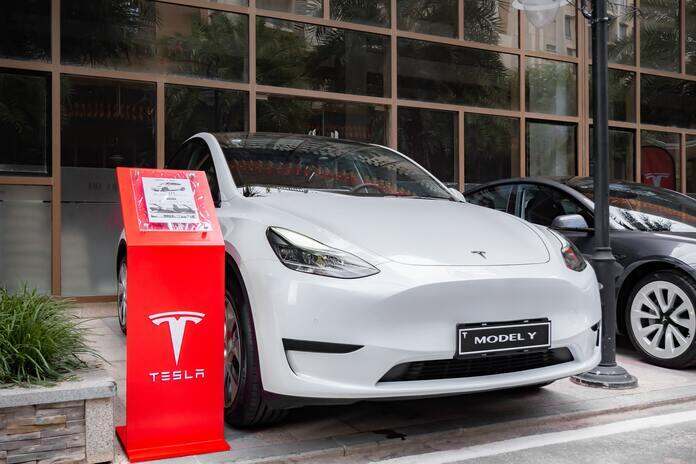Tesla (NASDAQ:TSLA) has become one of the most polarizing stocks in the market, delivering substantial returns to investors who believed in its story since its IPO in 2010. With a significant rise in stock prices over the past years, Tesla has outperformed legacy automakers. However, the question remains: can Tesla maintain its lead and reach its ambitious goals by 2030?
Impressive Historical Performance
Over the last five years, Tesla’s stock has soared more than 900%, showcasing exceptional returns for early investors. In 2020, amid the global pandemic, Tesla became the world’s most valuable carmaker, achieving a 740% rise. In 2021, the company’s market cap exceeded $1 trillion, a historic milestone for an automaker.
Elon Musk’s Ambitious Vision
Elon Musk, Tesla’s CEO, has consistently set ambitious targets for the company. In 2022, Musk predicted that Tesla’s production capacity would reach 20 million cars by 2030. This would require capturing a substantial portion of the global automotive market, equivalent to the combined annual sales of Toyota and Volkswagen, the two largest automakers.
2030 Forecasts for Tesla Stock
Despite Musk’s bold projections, doubts linger about Tesla’s ability to reach the 20 million cars per year target by 2030. During the Q3 2023 earnings call, Musk suggested that the company might not achieve the previously targeted 50% compound annual growth rate (CAGR) in deliveries.
Analysts and investors have varied forecasts for Tesla’s stock in 2030. Ron Baron envisions a $1,500 valuation, while Cathie Wood, a prominent Tesla bull, sets a base case target price of $2,000 by 2027. Even the bear case target price is $1,400, demonstrating confidence in Tesla’s long-term potential.
Key Catalysts for Future Growth
Tesla’s valuation is closely tied to its autonomous driving business, according to Musk and many analysts. The company’s ability to deliver on full autonomy and other software initiatives is crucial. However, Tesla’s autonomous driving technology is still not classified as Level 4, despite being labeled as “full self-driving” (FSD). Achieving full autonomy and progress in other software initiatives will be vital for sustaining Tesla’s valuation.
The contribution from Tesla’s Energy business is also anticipated to play a significant role in future growth. Musk believes the Energy business might eventually surpass the Automotive business, but clarification is needed regarding the metrics used for comparison.
Balancing Margins and Delivery Growth
To justify its valuation and Musk’s lofty expectations, Tesla must find a balance between increasing deliveries and maintaining strong double-digit operating margins. The company faces challenges such as a potential price war, the need to launch mass-market models, and expanding into emerging markets with lower margins.
Recent quarters have seen Tesla prioritize delivery growth, leading to margin erosion and operating margins falling below 8% in Q3 2023. Striking the right balance is essential for Tesla’s continued success.
Conclusion
While Tesla faces challenges and uncertainties, betting against the company and Elon Musk has historically resulted in losses for investors. With financial strength, a compelling product lineup, and a strong brand, Tesla is positioned to weather the current challenges in the EV industry. As the electric vehicle race intensifies and weaker players exit, Tesla has the potential to emerge stronger over the next few years.
Looking ahead to 2030, Tesla could become one of the largest automotive companies globally, even as it faces competition from emerging players. The company’s position as the most valuable automaker may hinge on advancements in its autonomous driving technology and the successful execution of its long-term vision.
Featured Image: Pexels















